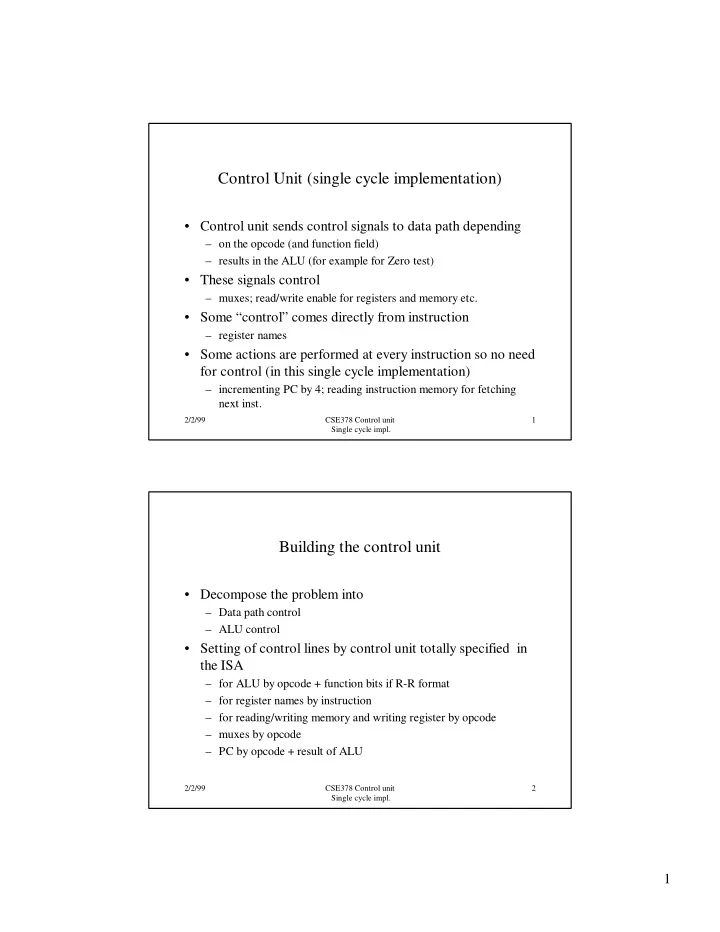

Control Unit (single cycle implementation) • Control unit sends control signals to data path depending – on the opcode (and function field) – results in the ALU (for example for Zero test) • These signals control – muxes; read/write enable for registers and memory etc. • Some “control” comes directly from instruction – register names • Some actions are performed at every instruction so no need for control (in this single cycle implementation) – incrementing PC by 4; reading instruction memory for fetching next inst. 2/2/99 CSE378 Control unit 1 Single cycle impl. Building the control unit • Decompose the problem into – Data path control – ALU control • Setting of control lines by control unit totally specified in the ISA – for ALU by opcode + function bits if R-R format – for register names by instruction – for reading/writing memory and writing register by opcode – muxes by opcode – PC by opcode + result of ALU 2/2/99 CSE378 Control unit 2 Single cycle impl. 1
Implementation • Input: opcode • Output: setting of control lines • Can be done by logic equations • If not too many, like in RISC machines – Use of PAL’s (cf. CSE 370). – In RISC machines the control is “hardwired” • If too large (too many states etc.) – Use of microprogramming (a microprogram is a hardwired program that interprets the ISA) • Or use a combination of both techniques (Pentium) 2/2/99 CSE378 Control unit 3 Single cycle impl. Where are control signals needed (cf. Figure 5.17) • Register file – Register write signal (R-type, Load) – Register destination signal (rd for R-type, rt for Load) • ALU – What kind of second operand (register or immediate) – What kind of function (ALU control) • Data memory – Read or write? – Control of what is written in result register (from ALU or memory) • Branch control – PC modification if branch is taken 2/2/99 CSE378 Control unit 4 Single cycle impl. 2
How are the control signals asserted (cf. Fig 5.19) • Decoding of the opcode by control unit yields – Control of the 3 muxes (regdest, ALU 2nd source, source of register write): 3 control lines – Signals for register write, read/write of data memory: 3 control lines – Signals to activate ALU control (e.g., restrict ourselves to 2) – Signal for branch (1 control line) • decoding of opcode ANDed with ALU zero result • Input Opcode: 6 bits • Output 9 control lines (see Figure 5.27) 2/2/99 CSE378 Control unit 5 Single cycle impl. 3
Recommend
More recommend